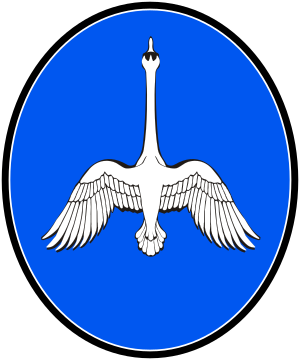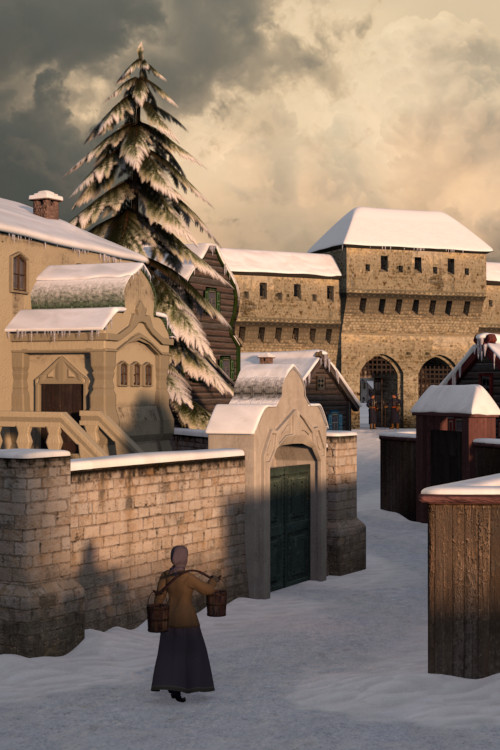The Bereghin Realm
The Bereghin Realm (Gosondarístvo Bergetísko [goson'darʲstvo ber'gʲetʲsko]) also known as Bereg, is a sovereign state in Central Halqueme.
Bereg borders its greatest rival, the Halcian Republic, in the east, the Ice Sea in the north, and the countries of Tagul, Baruchtar, and Kumat in the south.
In the west, Bereg's border is slightly fuzzy as the human-inhabited Central Halqueme gives way to the relative wilderness of the Other Side—the western part of the continent that took a lot of thaumic damage during the Great Sundering. That region is still highly active thaumically, riddled with spacetime anomalies and inhabited mostly by the Fair Folk. Humans do not venture there, and the principalities bordering it—Tregorie and Isnev—are considered something of a frontier.
Climate
Bereg has several climate types. The northern provinces of Istań and Kema have a mostly tundra climate (some of Istań is actually polar). Kelgorod, Tregoríe, and the central principalities have continental climate bordering on cold semi-arid. Finally, most of Oren and southern Isnev are semi-arid steppes.Demography
Bereg is a multiethnic state. While ethnic Bereghins dominate in Kelgorod, the north and most of Tregoríe is largely Istani, while the southern principalities have had a major influx from Tagul and Baruchtar. The ethnicities intermix freely, and a significant portion of the population is of multiethnic background. The total human population of Bereg is approximately 110 million. Approximately 80% of the population are peasants, 11% are artisans and merchants, 2% are sorcerers, and another 1% are nobles. There’s also a considerable fairy population, both urban (house spirits) and countryside (woodland and water sprites). The fairies, even the urban ones, generally stay out of human sight and their exact numbers are difficult to estimate.Administrative Division
The Realm of Bereg is divided into 14 provinces. Five of those provinces are principalities, seven are boyar ancestral lands, and two are crown domains (though one of those domains, Tregoríe, is also technically a principality). The provinces are divided into charges centred around decently-sized charge towns of 10-40 thousand people. Those towns are headed by appointed noble governors called provosts, and are political and judicial centres. They generally have a court of justice, a sorcerer school, and a military force. They also usually (but not always) have a town heed (gorodísko veče) —a popular assembly with varying degrees of input into the provost’s decisions and town council membership. Charges are in turn divided into wards governed by stewards. A typical ward town is around 5,000 people. It has a steward, a hospital, a literacy school, and a watch force led by a bailiff. On that level there are also wardless towns—settlements that have the legal status of a town but have no wards (territories they’re responsible for). The ward towns, and especially the wardless towns, are much more likely to have a veche than a charge town. Those veches also, as a rule, have a much greater influence on the town politics, to the point that some towns have been known to elect their own stewards with only a token approval from the provost or head of the province. Below the ward level are the villages, the noble strongholds, and the homesteads. The villages are typically attached to either a town or noble stronghold.Government
Bereg is a feudal monarchy in the process of centralization. The head of the government—and the reigning monarch—is called a king or a queen (gosondaŕ / gosondaŕa). The monarch’s authority is based on the Fate’s Decree, is inherited through absolute primogeniture, and is in theory unlimited. However, there also exists the Heed, which is a council of the powerful magnates of the realm. Originally it included only the boyars (the few free landowners), but in recent years the princes have sat on it, too. (For more information on the class structure of Bereg, see the article on the Bereghin feudal ladder). The Heed’s powers are based on precedent rather than on written law, and in theory the laws made by it are supposed to be issued jointly, under the formula of “the King/Queen has decreed and the boyars have judged”. However, there’s a constant tension between the boyars and the monarchs, and historically there are precedents of both royal decrees unsupported by the boyars and the boyar judgements unsupported by a monarch. At the moment the balance of power is tilted slightly in the crown’s favour. However, the reigning dynasty (the Swan Sigil) has dwindled to only two living representatives, and the current king’s closest relatives — the Eagle Sigil — are overall very traditionalist and pro-boyar, so the balance can shift again at any time. The monarch’s privy council consists of the following officials:- the Keeper of the Seals (in charge of the judicial system and legal matters)
- the Great Harvester (in charge of finance and economics)
- the Great Rider (in charge of military affairs)
- the Great Hunter (in charge of domestic security and foreign intelligence)
- the Great Cup-bearer (in charge of the royal household/ ceremonies)
- the Court Mage (in charge of magic-related affairs, including battle magic)
History
The name of the realm, Bereg, seems to derive from beregŭ, which means “shore, bank”, or possibly from an even older word bȇrg which meant “edge, hill, coast”. Alternatively, it could be derived from the verb bergti (to guard, keep, protect).
The people called Bereghins (bergetiči) were, originally, the tribes that inhabited the shores of Lake Kela.
After the Great Sundering, when a thaumic cataclysm altered the landscape of the continent and the Kela River appeared, the Bereghins found themselves at the hub of the continental trade. The northern lands exported amber, ivory, iron ore, weapons, and walrus bone; the southern lands exported spices, wine, jewelry, glassware, and textiles. These goods were transported for the most part along the Kela waterway. The Bereghin tribes, who controlled a large part of Kela, facilitated that trade, and also exported furs, honey, beeswax, ceramics, timber, tar, and leather.
By the 10th century Asunder, when the southern Enekantan Empire collapsed and the downriver trade dried up, Bereg had become an amalgamation of semi-independent principalities known as Brežna Zemí ([brʲeʒna zʲemʲ], “shore land”, or possibly “safe land”).
In 1323, the wedding of the Princess of Kelgorod and the Prince of Tigoń signified a first serious attempt to unify the fragmented Brežna Zemí into a single Bereghin Realm, and is generally considered the foundation date of Bereg.
However, that first attempt soon devolved into a rather bloody civil strife. In a large part it was due to an overly complicated rota system of succession. It was finally altered in 1488, when the Great Prince and Princess of Kelgorod, Gradislav and Lebed, declared themselves the monarchs of all of Bereg and instituted an absolute primogeniture system of succession.
Lebed, also known as the Swan Princess, was rumoured to be either a fairy changeling or a daughter of one. It is possible that she was—her descendants, especially male ones, rarely have more than one offspring, as is common with fairy children. It’s also possible, however, that the Swan House deliberately had fewer children to discourage the return to the rota system—a very valid concern, because the rota system is still in use among some of the aristocratic families.
While this has somewhat stabilized the government and allowed centralization to begin, it also meant that for the past two centuries Bereg has been only a step or two away from the ruling dynasty going extinct—and from a crisis of succession. At the moment, the Swan House is represented by the reigning king, Boleslav, and his older cousin, Prince of Tregorie.
Technological Level
Due to the proximity of the Other Side, magic is traditionally seen in Bereg as a chaotic force that must be contained rather than harnessed. The most developed branches of magic in Bereg are medicine, alchemy, and hydromancy. Artefactorics is mostly used in sky ship construction and in some forms of manufacture. Battle magic is known, but severely limited. Glamour is legal, but discouraged.
To compensate for underdeveloped battle magic, Bereghins do have higher lay technology levels when compared to their neighbours. In particular, they use cannons and matchlock muskets, which, while overall slower and less reliable than battle magic, have nevertheless been enough to keep the neighbours at bay. At least, so far.
Bereg also has the monopoly on sky ships, in part because of their special branch of artefactorics, but mostly because a key component is feywood tar—and feywood can only be reliably harvested in northwestern Tregorie.

Founding Date
Year Asunder 1323
Type
Geopolitical, Country
Capital
Alternative Names
Bereg
Demonym
Bereghin
Government System
Monarchy, Absolute
Power Structure
Feudal state
Economic System
Traditional
Currency
sobol (representative monetary system)
Major Exports
tieberry, firebloom, furs
Major Imports
spices, textiles, tin
Legislative Body
The Heed
Subsidiary Organizations
Official Languages
Controlled Territories
Neighboring Nations
cease fire
Remove these ads. Join the Worldbuilders Guild







Comments